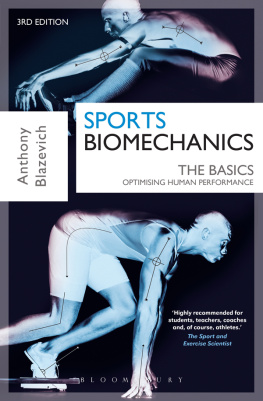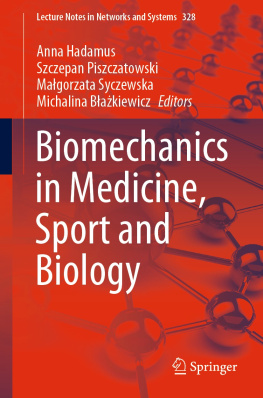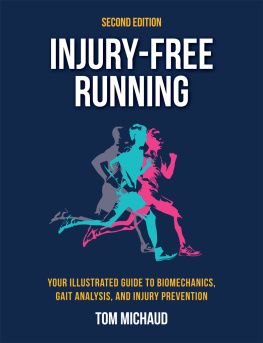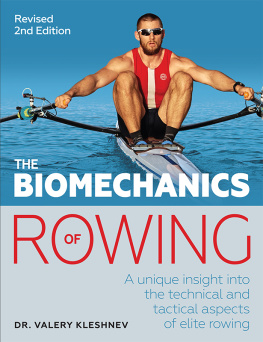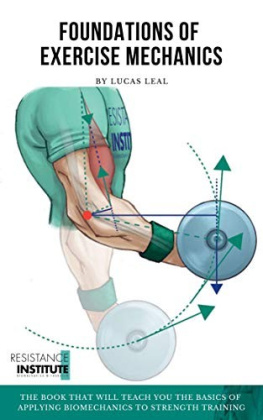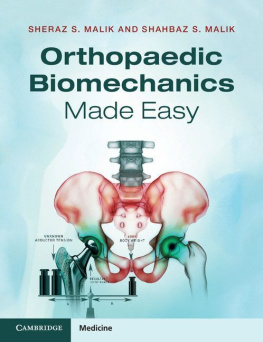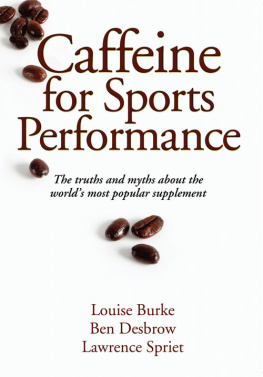
Bloomsbury Sport
An imprint of Bloomsbury Publishing Plc
50 Bedford Square London WC1B 3DP UK
1385 Broadway New York NY 10018 USA
www.bloomsbury.com
BLOOMSBURY and the Diana logo are trademarks of Bloomsbury Publishing Plc
First published in 2007. This edition published in 2017
Text Anthony J. Blazevich, 2017
Diagrams by Dave Saunders Bloomsbury Publishing
Anthony J. Blazevich has asserted his right under the Copyright, Designs and Patents Act, 1988, to be identified as the Author of this work.
All rights reserved. No part of this publication may be reproduced or transmitted in any form or by any means, electronic or mechanical, including photocopying, recording, or any information storage or retrieval system, without prior permission in writing from the publishers.
No responsibility for loss caused to any individual or organization acting on or refraining from action as a result of the material in this publication can be accepted by Bloomsbury or the author.
British Library Cataloguing-in-Publication Data
A catalogue record for this book is available from the British Library.
ISBN: Paperback: 978 1 4729 1722 5
ePub: 978 1 4729 1723 2
ePDF: 978 1 4729 1724 9
To find out more about our authors and books visit www.bloomsbury.com. Here you will find extracts, author interviews, details of forthcoming events and the option to sign up for our newsletters.
CONTENTS
I often hear that humans are poor athletes; that ants can carry ten times their own weight, cheetahs can run at over 100 kilometres an hour, fleas can jump hundreds of times their own height, whales can migrate thousands of kilometres with little apparent rest, but humans are really good at ... nothing. This has always amazed me because while other animal species might have one or two incredible physical abilities humans seem to be able to do just about everything. Some humans can lift 260 kg overhead, some can run at over 40 km per hour, some can run for days with little rest, some can swim long stretches of water, some can dive to depths of hundreds of metres on a single breath of air and some can jump over a bar that I can barely touch on my tiptoes!
We are the all-rounders of the animal world. We also have a competitive spirit (not unique to humans) that makes us want to run faster, go further, lift more and jump higher, so we are always trying to work out a better way to perform incredible feats. Athletes who are trying to beat the worlds best train for hours a day, but unfortunately, even with advances in training methods, we dont seem to have come very far in many aspects of our physical ability. Physiologically, todays athletes can use about the same amount of oxygen in their muscles as they did forty years ago. They arent better able to tolerate high levels of intense work; they dont breathe more rapidly nor do their hearts beat more quickly. Psychologically, youd be hard-pushed to show that athletes of many years ago werent able to compose themselves when stressed, motivate themselves for a big effort or rouse their team mates for one final push, although perhaps more athletes have the skills to do these things nowadays. So how have we been able to beat world records?
At the risk of being condemned by my colleagues, I suggest that the answer lies in our present-day understanding of the physics that underlies sporting performance. We ride bicycles with air-cutting aerodynamic design and wear running shoes that absorb just the right amount of impact energy while allowing us to bounce on all manner of surfaces, or wear special suits that reduce the vibration in our muscles and aid us aerodynamically. We manipulate our bodies during running and jumping so that we can eke out every last centimetre and organise our body movements to apply forces with high magnitudes and in perfectly the right direction to make an object, or ourselves, travel faster and further.
Mechanics is the field of science concerned with the study of the motion of objects; biomechanics is the study of mechanics in biological systems. The specialised field we work in, which studies biological and man-made systems, is sports biomechanics.
To understand sports biomechanics, we have to understand mathematics. And this can be a big problem. No one wants to spend hours learning complex mathematical procedures just to show that if they want to jump up they need to apply a large ... upward ... force. (Actually, you apply it downwards and the Earth applies it back up at you, but youll learn this if you read the book.) I certainly used to have a problem with that. When I was a student, I never really wanted to be a biomechanist; there was too much mathematics involved and I hated it. But as I continued with my studies I realised how many answers to my questions required an understanding of physics and mathematics, and therefore biomechanics. There was no point telling an athlete to perform a certain type of training if I didnt understand how much force they had to produce, in what direction, over what range of motion it needed to be produced and at what speed. I also realised that, instead of spending months giving an already good athlete lots of physical training to make them just a little bit fitter, I could spend a few weeks altering their technique to make them staggeringly more efficient ... and the world of sports performance seemed to open.
In this book, I want to use a question-based approach to answer the questions that (I hope) youve always wanted answered. At the same time, I want to get you to understand the how and why of the answer. This will involve a little bit of reading (and probably some re-reading) but I think that sports biomechanics is so interesting that you wont have any problems doing that.
To make it easier, I will give you three tips that helped me when I was first struggling to understand biomechanics:
1. Always translate scientific language into plain language
When I first started to read textbooks, I realised that at the end of the first paragraph Id sort of understand what was going on, at the end of the page Id be less sure and by the end of the chapter I had absolutely no idea! So I changed the way I read and started to draw pictures in my head of what was going on. For instance, if the text said so by applying the force at a greater distance the torque will be increased, I would imagine someone undoing a nut holding a spanner near to the nut or farther from it. To do this I needed actually to understand what I was reading: what is torque anyway?
This is why you need to translate. When you see a scientific word, translate it into an image that you understand. Words like torque, momentum, conservation, inertia and restitution might not mean much if you dont use them very often. If you read past them without really understanding what they mean, youll never truly understand what youre reading. So, instead of the torque will be increased ... you might visualise the rotational force increasing.
Translating what you read might take you a little longer but youll be surprised how easy and how helpful it is. I will try not to use too many complicated terms in this book but I cant translate every word every time or the book would be 5000 pages long, and you certainly wouldnt read that!
2. Remember that a mathematical equation is just short-hand
I used to see a mathematical equation, freeze, and move on hoping it wouldnt bite me as I read past it, but I have realised that if I can translate equations into English they are very helpful. For example, = F d simply means torque is equal to force times distance. Torque is the rotary effect of a force (or, as I usually tell myself, a rotary force). So this equation simply reads a rotary force has something to do with how much force I produce and the distance away from the centre of rotation that I apply it. The equation could be re-written as F = /d; force is equal to the torque divided by the distance, or a force is bigger if the rotary effect of the force is bigger or if the distance from the centre of rotation at which that force was applied is smaller.
Next page
